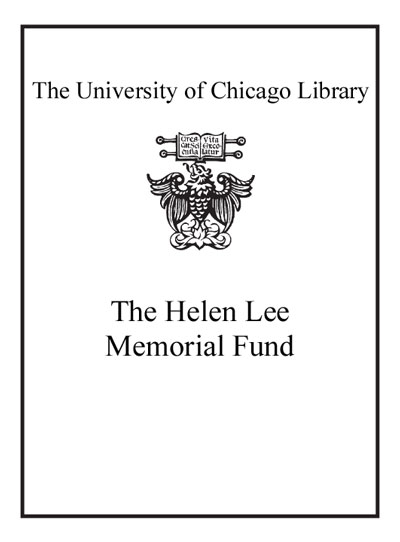| Notes: | "Published on the occasion of the 2022 AMOCA exhibition of the same name, Breaking Ground: Women in California Clay features 126 works in full color alongside essays by Jo Lauria, Elaine Olafson Henry, and Edith Garcia. The essays are introduced with a foreword from AMOCA Executive Director Beth Ann Gerstein."-- AMOCA webpage.
The exhibition is co-curated by Beth Ann Gerstein (Executive Director, AMOCA), Jo Lauria (Adjunct Curator, AMOCA), and Edith Garcia (Professor, California College of the Arts and University of California, Berkeley).
Exhibition held September 10, 2022-March 12, 2023.
Includes bibliographic references.
|
|---|
| Summary: | "'Breaking Ground' highlights the significant shifts in California ceramics over several generations of women artists. The story is told in three sections, using the artist's "breaking ground period" (rather than their date of birth) to determine their place in history. The story begins with trailblazers Laura Andreson, Betty Davenport Ford, Stefani Gruenberg, Vivika Heino, Elaine Katzer, Mary Lindheim, Martha Longenecker, Gertrud Natzler, Susan Peterson, Ruth Rippon, Susi Singer, Helen Ritcher Watson, Marguerite Wildenhain, and Beatrice Wood. These artists laid the groundwork for the field and inspired successive generations of artists. The second section includes a disparate group of artists who explored--or are exploring--the female figure, feminism, and the creation of the perfect form. Works by Judy Chicago, Dora De Larios, Roseline Delisle, Viola Frey, Magdalena Suarez Frimkess, Phyllis Green, Margaret Keelan, Karen Koblitz, Marilyn Levine, Elsa Rady, Lisa Reinertson, Nancy Selvin, Anna Silver, and Sandy Simon mark a substantial break in artmaking from their predecessors. The final section represents a younger generation of artists working to shift the perspective" and includes Ashwini Bhat, Christina Erives, Keiko Fukazawa, Jenny Hata Blumenfield, Julia Haft-Candell, Anabel Juarez, Cathy Lu, Brittany Mojo, Crystal Morey, Kristen Morgin, Annabeth Rosen, Erika Sanada, Joan Takayama Ogawa, Kim Tucker, Anna Valdez, and Bari Ziperstein. Their work, in many ways, continues the conversation of the artists featured in the second chapter to traverse the themes of politics, identity, the environment, and other prevailing issues of globalization, colonialism, and reclaiming histories that have become increasingly important in the lives of practicing women artists."-- AMOCA webpage.
|
|---|

